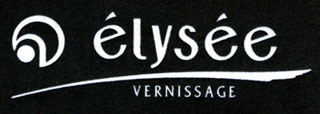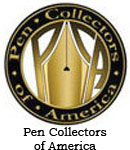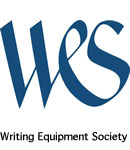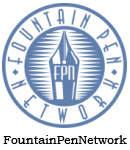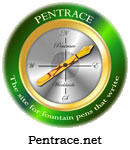Élysée Cloisonné
by Jim Mamoulides, December 27, 2003
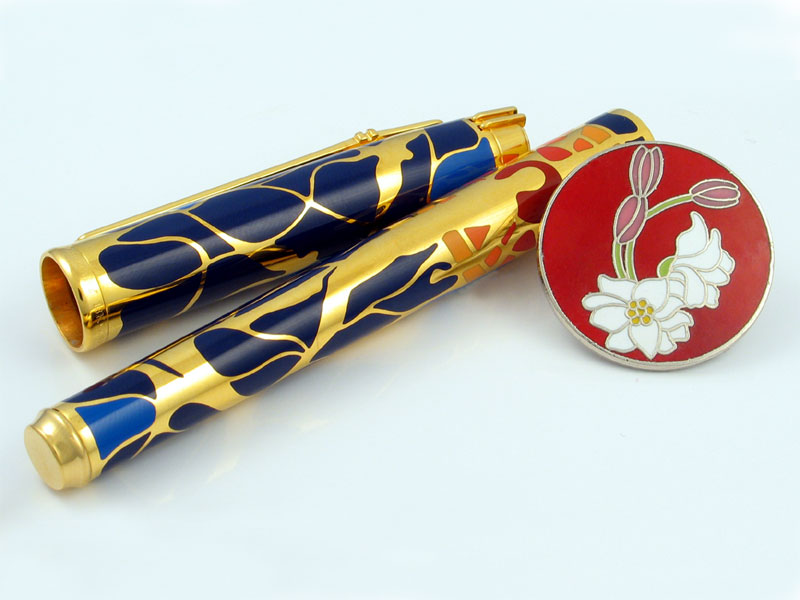
An ancient Chinese decorative art
The striking visual impact of the first three Élysée Limited Edition pens is attained through the use of the ancient Chinese art of cloisonné. Cloisonné is an enamel art that creates its mosaic picture by framing its enamel panel elements in a delicate metal wire work. The images formed through this art can be abstract or literal, and elements of both are used in the three Élysée Limited Edition pens. Élysée called their cloisonné lacquer technique "Laque Intarsia" and it combines elements of traditional Chinese cloisonné with metal sculpture. All of the Limited Edition pens are based on Élysée's Parthenon line, introduced in 1992, which also include several cloisonné designs.
Chinese cloisonné originated in Beijing, with the earliest articles being traced to the Yuan Dynasty (1271-1368). Articles made during the Ming dynasty (1426-1456) are considered among the finest examples of the art. During the latter Ming period, in the reign of Jingtai (1450-1456), a dark blue enamel color became popular and is now known as the "Blue of Jingtai". Cloisonné craftwork is considered to have reached its peak during the reign of Qianlong (1736-1795) of the Qing Dynasty, when pure copper began to be used as the base metal. Later artists developed the multicolored technique seen in current articles.
Cloisonné articles can be large furniture items such as tables, chairs and screens, or smaller and more common everyday items such as chopsticks, boxes, jewelry, vases, and cups. Cloisonné creates in an everyday object an artistic and decorative appeal without reducing the objects usefulness.
The cloisonné process
Cloisonné is a step by step process of base hammering, filigree soldering, enamel filling, enamel firing, polishing and gilding.
Early cloisonné was made from a base of red copper and later pure copper, which was chosen because it is easily hammered, stretched and shaped as needed. This initial work is called base hammering.
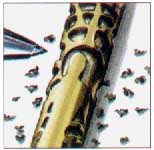
Once the base is completed, thin copper wire is soldered to the base to outline and frame the design that will be filled in with enamel. On many objects the wire is quite thin, with the finished work forming a delicate filigree, giving the step its name, filigree soldering. The strips themselves can become part of the artwork rather than simply the frame, through use of wider strips and shaped pieces.
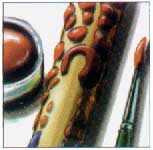
Once the filigree is finished, it is thoroughly cleaned and prepared for the enamel filling. The enamel is flowed into the compartments formed by the filigree, something of a "paint by numbers" approach, with each compartment having its separate color with the result similar to a stained glass window.
The object is then kiln fired, and after each firing, some enamel will need to be added to each compartment as it compacts and hardens. This repeated process is called enamel firing.
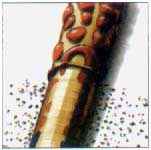
After firing, the uneven surface of the object will require polishing. This is done in steps from coarse to fine with different materials, including emery, whetstone, and hard carbon. Some firing may be done after each polishing step. This will continue until the entire surface is uniform and smooth.
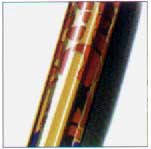
The last step is gilding, where the exposed copper filigree is plated with gold or silver metal.
Laque Intarsia
Laque Intarsia is Élysée's name for its cloisonné lacquer process, where lacquer is inlayed into impressions made on the body of the pen and then the surface is smoothed and the exposed metal is plated. The following pictures are Élysée's illustration of the process on the Impression No. 1 pen.
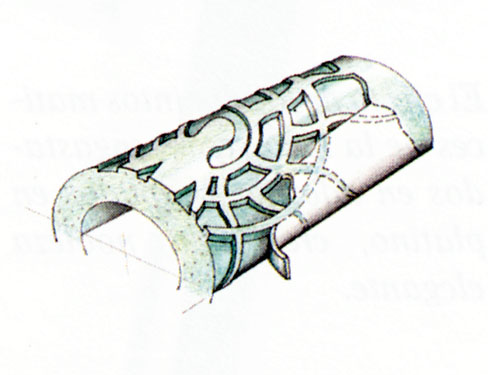
As with Chinese cloisonné, the pen base is created and thin wire is soldered onto it to create the outline of the design, which will be filled in with enamel. Because of the unique design of Élysée's cloisonné pens, the wire may be thin or may be quite large, making up part of the design itself, such at the figure walking on the Impression No 1 pen.
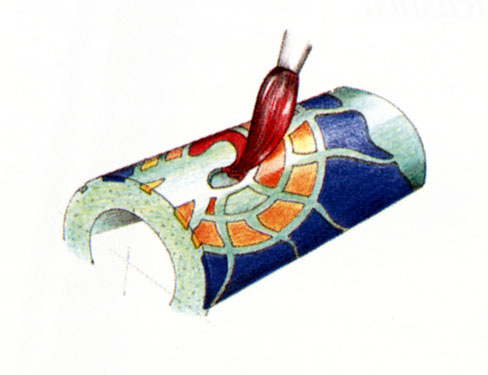
The finished pen filigree is cleaned and the vivid enamels are applied to each of the compartments in the design. The pen base is then kiln fired. Enamel is added to compartments where needed and the pen is refired until the surface is completely even.
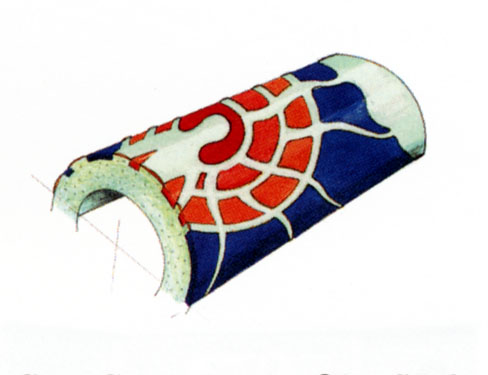
After firing, the pen base will be polished until the entire surface is uniform and smooth.
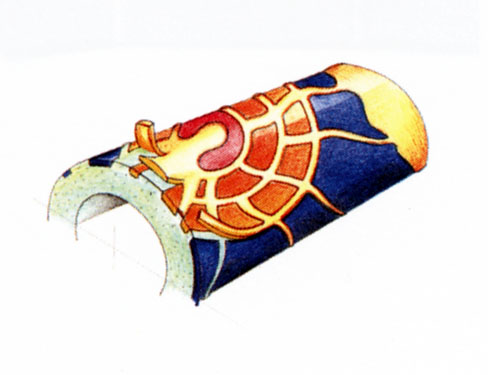
As with traditional cloisonné, the last step is gilding, where the expose filigree is gold or platinum plated, as required by the design of the pen.
Élysée cloisonné pens
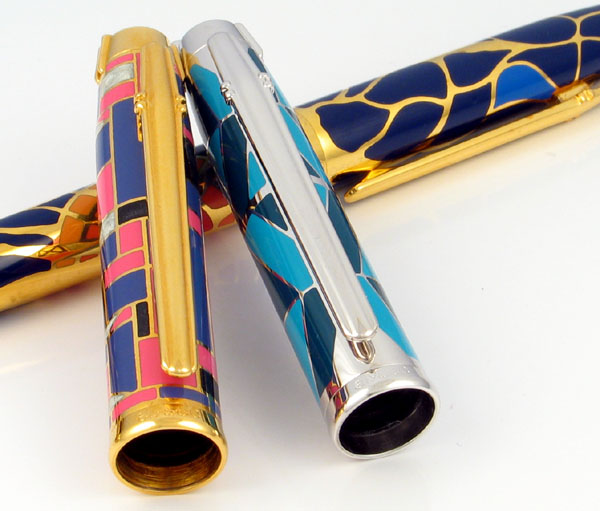
Front left To right: Edition No 1 / Edition No 2, back: Impression No 1
Three of the Élysée Limited Edition pens are examples of the cloisonné lacquer technique and were commissioned as an artist's series, called Vernissage, to show that artist's work in the pen.
The first two pens in the Vernissage series were designed by artist Karl Diesner, who says the purpose of his work is to "activate our vision." He prefers to work in bright colors and with geometric shapes, and this definitely shows in the design of these two pens, Edition No 1 and Edition No 2.
The third pen in the Vernissage series, Impression No. 1 "Toward the Light", was created by artist Manfred Eberhard. He believes that "art has the task of creating freedom for human feelings." There are also several Parthenon series pens that also use cloisonné techniques, including the Trajan series.
Cloisonné is fairly rare on fine pens, though it can be found on many inexpensive no-name pens from China. Élysée extensively used this technique on its high end pens, with many interesting patterns and designs. The fact that Élysée is now out of business may bring more interest to these very unusual pens.
Interact
Comments on this article may be sent to the author, Jim Mamoulides

